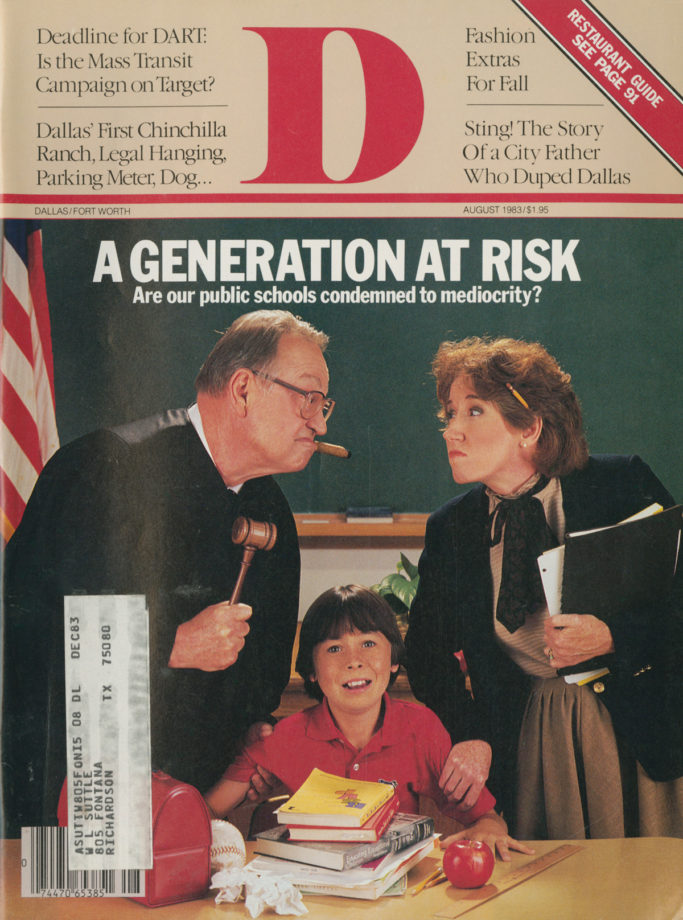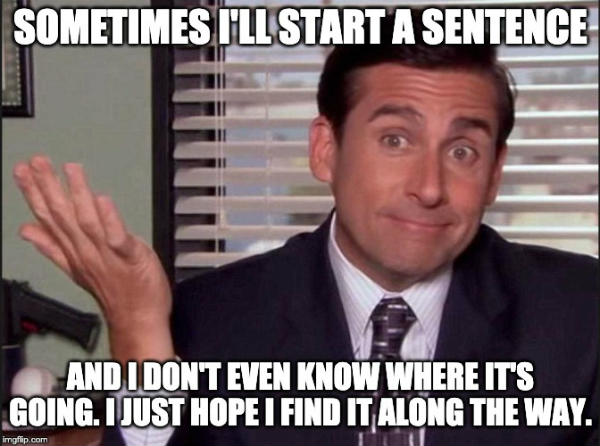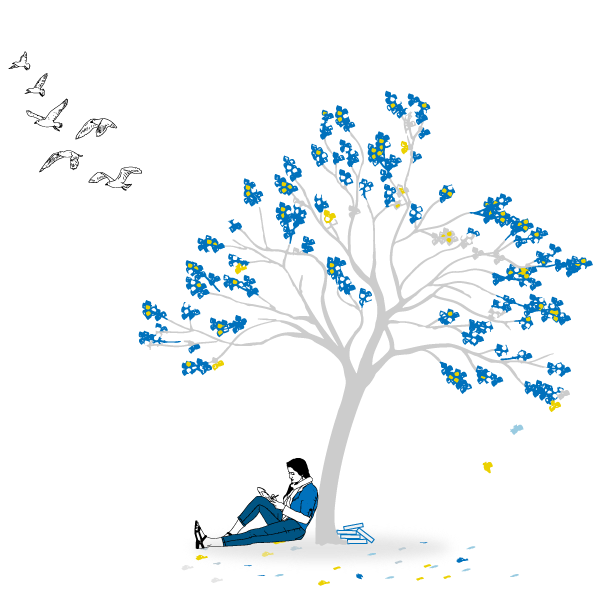Teaching in 2020

- “‘There are lesson plans, transfer forms, ratio plans, nurse’s forms, report cards, attendance forms and special projects forms,’ says De La Cruz. ‘Plus census forms, principal referral forms, test booklets, grade books and student files. If you think one of your students might need special ed, that’s another 20 forms. Then there was the form we had to fill out so the district could measure how many forms we had to fill out.’”
- “And there are accusations of unfair hiring practices – (…)Of principals who can never be instructional leaders because they are former coaches. Of divisive racial infighting that pits black and brown against white.”
- “My kids aren’t belligerent or rude or doped-out or dangerous or any of those things you associate with the early Seventies,” Mitchell says. “In fact, they’re really sweet and enjoyable. They just lack self-control, and they aren’t motivated to learn.”
- “Students aren’t afraid of failing the way our generation was,” Capizzi says. “You give them an F? They just shrug. I once spent five weeks teaching a unit on the Civil War. At the end of it, I gave a test; the last question was ‘The South won the Civil War. True or False?’ One-third of the class put ‘True.’”
The aforementioned quotes are from 37 years ago.
The article “Why Can’t Teachers Teach?” by Ruth Miller Fitzgibbons was published in a Texas magazine called D Magazine in August 1983. It’s also available in the archives online.
Although that article is from 1983 in Dallas, it can be from any state today.
You are likely to disagree, trying to recall your children’s or your own schooling. It can’t possibly be that bad, is what everyone says. It was never that bad, was it?

The truth is that so much then and now has always depended on parents and that’s the one thing we can’t control, can’t legislate, and the one thing that has remained consist when we compare the past and the present. Even when parents were busy working two jobs, even when parents were divorced, even when parents themselves weren’t formally educated, even when there was no one around to fix breakfast, children who made it through school (even if they were confused, anxious or unhappy in their childhood and weren’t “successful” till later), had one thing in common: an unspoken understanding that education mattered; it was important to be literate. Even if students didn’t know why it was important, even if they weren’t going to go to college, even if they felt they weren’t learning, they still had to show up.
Issues that Remote Learning has highlighted for everyone to see:
- Digital Literacy.
- Students have iPhones, game consoles, unmonitored social media accounts, but don’t know how to cut-paste or open a tab or send an e-mail or ANYTHING related to actually using technology in a meaningful way. Students who are being successful are those who know how to navigate the digital landscape, or they have adult supervision and assistance at home. “Digital natives” is the worst joke Silicon Valley sold to districts everywhere.
- Literacy.
- Students who are reading at a 4th or 3rd grade level in 9th grade are simply not going to be able to follow written instructions for assignments even if a teacher demonstrates what’s required. Students who are being successful are those who already know how to read at grade-level.
- Level of independence.
- Students who know how to sort their own clothes, brush their teeth, organize school materials, use a planner, ask for help, budget time (this happens in the classroom naturally, but at home it depends on many factors), not have social media or YouTube or Spotify tabs open while the teacher is reviewing material, heat lunch in a microwave, get a snack, have water bottle near, sleep on time are showing success in Remote Learning even though they are not happy about it.
- I am not speaking of elementary school students; they require more support. And I have no idea how the parents who are not working from are managing their little ones’ learning. That being said, it’s the older students who are struggling more than the younger ones. Furthermore, I know all the tasks I have mentioned are ones that my four-year-old niece has been taught at home and does herself already. Additionally, I am neither claiming she is exceptional nor am I stating if a four-year-old can do this, all children should be able to by a certain age. I am simply stating that students who are being successful now have been successful all along, even before Remote Learning. Although for some students the online setting has been a blessing in disguise, but for the majority, it’s a lot to manage.
- Students who know how to sort their own clothes, brush their teeth, organize school materials, use a planner, ask for help, budget time (this happens in the classroom naturally, but at home it depends on many factors), not have social media or YouTube or Spotify tabs open while the teacher is reviewing material, heat lunch in a microwave, get a snack, have water bottle near, sleep on time are showing success in Remote Learning even though they are not happy about it.
- Parent-Teacher Partnership.
- Students who are being successful have parents who are actively communicating with the teachers if there are concerns and they are doing their best to support the teachers; accordingly, the teachers are helping the parents however they can. Remote Learning, very much like in an actual school, simply can’t happen without everyone coming together to do their best.
Personally.
I have experienced severe headaches due to being behind a screen for over six hours a day. I have had trouble sleeping at night because, very much like a computer, it takes my brain awhile to shut off. Yes, exercise helps, but no matter how much I move, the fact that I sit so much is still too much. This doesn’t even include time to give feedback, put in grades in one platform and then transfer them into another platform, answer emails, and all the meetings in addition to the required screen time. Tasks that took me 5 minutes to do in the classroom take 15 minutes online. Multiply that by infinite small tasks. We are lucky that my computer is plugged into ethernet cable, but twice Comcast (there’s pretty much a monopoly in my state) has crashed in the entire zip code or neighborhood block. Nothing to be done for it except bang one’s head against an invisible wall. I am also lucky that I live with someone who is very tech-savvy and can help me when I am stuck; I know my frustration and panic when some tech-related issue arises and I have help, so I can’t even fathom being a 14-year-old or 12-year-old at home by himself who doesn’t know how to reset the modem.
Equity and yet…
On one hand, equity issues are real. Students who haven’t had to use the awful Google Chromebook devices* have had fewer tech problems because they have another type of desktop or laptop at home. If they have more than one sibling at home, they have expensive noise-cancelling headphones available. Additionally, not all students have access to reliable internet. The most challenging aspect of remote learning is that not all parents, regardless of their income bracket, can work from home. All this is true.
*By the way, why haven’t schools provided these to all students all along as part of their public education? Teachers have to sign up for Computer Labs and laptop carts to access simple technology! Why?! All of a sudden, there is a free device for every student.
BUT equally true is that there are students who don’t have a functional laptop and have to use one provided by the district because they have two iPhones, Xbox, and many other game consoles, in addition to many other material comforts and joys. Education is simply not a priority for many families. At best, when “education” is a priority it’s about getting into this or that college, or playing MLB or NBA “one day,” or acquiring fame or money. It is not actually about learning, or thinking for oneself, or contributing to society in any meaningful way.
Finally, neither scenario takes into account the substance abuse crisis going on long before the lockdowns, now spilling into every capillary of American society. Many students are literally on their own and school was the only place where they could get away from the dysfunctions at home.
The Silver Lining (I think)
I have grown exponentially as an educator learning from teachers all over the United States working extremely hard to deliver an education in the most trying times. Educators everywhere are sharing terrific resources with others, and for the most part, for minimum or no cost. One such group that has provided me tremendous support during this time is The Chippewa River Writing Project (CRWP), a site of the National Writing Project (NWP) at Central Michigan University. Here is a great post by Megan Kowalski on their blog about decision fatigue which I didn’t have a name for when I couldn’t decide if I wanted soda with or without ice and the overwhelm I felt for my inability to make such a simple decision.
Decision fatigue is exactly what it sounds like; it occurs when a person has become overwhelmed by the number of decisions they have to make and does not approach making new decisions with the same energy as before.
There are several other resources that have been a lifeline and I am grateful for every single one of them. I have taught myself many new platforms, I have ignored the noise about flashy tools and focused on reading, writing, and thinking and what my students need.
And somehow, the students who are able to show up are learning. We most definitely are not covering as much curriculum as I would in a regular school year, but they are writing and reading. The “classroom discussions” are not the same and I have given up trying to replicate the classroom environment. It’s just not possible. Everything takes longer and not all students are comfortable to speak online. Many can’t unmute because they are in very noisy environments. Majority refuse to turn on their cameras and I don’t blame them. I wouldn’t want to look at myself when I was their age. Frankly, I don’t want to look at myself all day now. Also, it’s exhausting.
It’s nice to do laundry in between class periods and hop onto a Zoom Book Club meeting during lunch. But I miss the sound of scissors, the fumbling of post-it notes, sound of their nervous laughter, sound of backpack zippers not working, students tripping over feet that are growing too fast, watching students help each other, students talking to one another and having to be reminded to keep the volume down, the spark in their eyes when new ideas form, and most of all I miss witnessing all the learning beyond the lessons. It’s a loss for which I don’t yet have words.
How have I managed it so far?
Honestly, it’s not easy. I am not as emotionally raw as I was back in August and September. But some weeks it’s inevitable to crash from fatigue simply because the brain is extremely distraught and distressed if it’s been plugged online for that long. I, like my students, am not only online for school but for connecting with friends, attending literary events, book talks, meeting my writing groups, FaceTime with my family; if left unchecked, being online can occur without a pause and it’s really easy to crack.
Also, I can complain about my district all day but the administration at my specific school is really supportive and has trusted me to do what’s best. The same goes for parents. This level of trust goes a long way and has been tremendously helpful. For the most part.
The biggest challenge is not having quick access to teaching colleagues around the hallway. You can’t really not bring it all home when you are already at home and don’t have the energy to text a colleague who is also experiencing the same kind of day.
After hearing about the student who committed suicide while on a distance learning Zoom call in Lodi, California, I realized the most important daily reminder my students need is that this is not forever. Nothing is forever. Awful historical events came to pass, and that this too shall be over one day. It also helps that I am very intuitive; even when they don’t have their videos turned on, I can tell when they are more down than usual (they are always sad) and I change what we are supposed to accomplish for that day. I am focused on reading, writing and thinking and not as attached to my curriculum. I allow a lot of time to make-up work (which is a lot of work for me, but it gives those students a chance who just can’t keep up). I am more invested in feedback and growth than grades. They tell me I am funny and that helps them a lot (even though I never hear them laughing because they are “muted” unless they need to speak). And most importantly, I don’t keep them online for the entire 90 minutes per class period. I don’t even know what to say about teachers who just won’t budge on that despite district “recommendations” to not do that.
January through March are really challenging in a regular school year, so I am bracing for the worst when we return next semester. If we don’t go back at all, we will be one of the very few districts in the entire country that didn’t even attempt hybrid learning. That infuriates me to no end.
I leave you with this terrific article in the Irish Times by Olive Keogh which discusses pandemic-induced ‘brain fog’ as a result of cognitive overload.
The human brain is phenomenally resilient but it gets tired and over the last nine months, it has been on the equivalent of a processing marathon. There has been a tsunami of information and conflicting advice to sift through while trying to keep work and domestic life ticking over against a backdrop of health fears and job worries.
Planning and self-discipline are key to coping (…) and central to this is establishing and mastering new routines so you’re not wasting valuable mental energy on ordinary tasks. Also, make a concerted effort to limit distractions by only doing one thing at a time.
One thing at a time.

You can read the first post wrapping up 2020 here (it’s about writing news) and the second post here (it’s about how I wrote anything at all in 2020).

